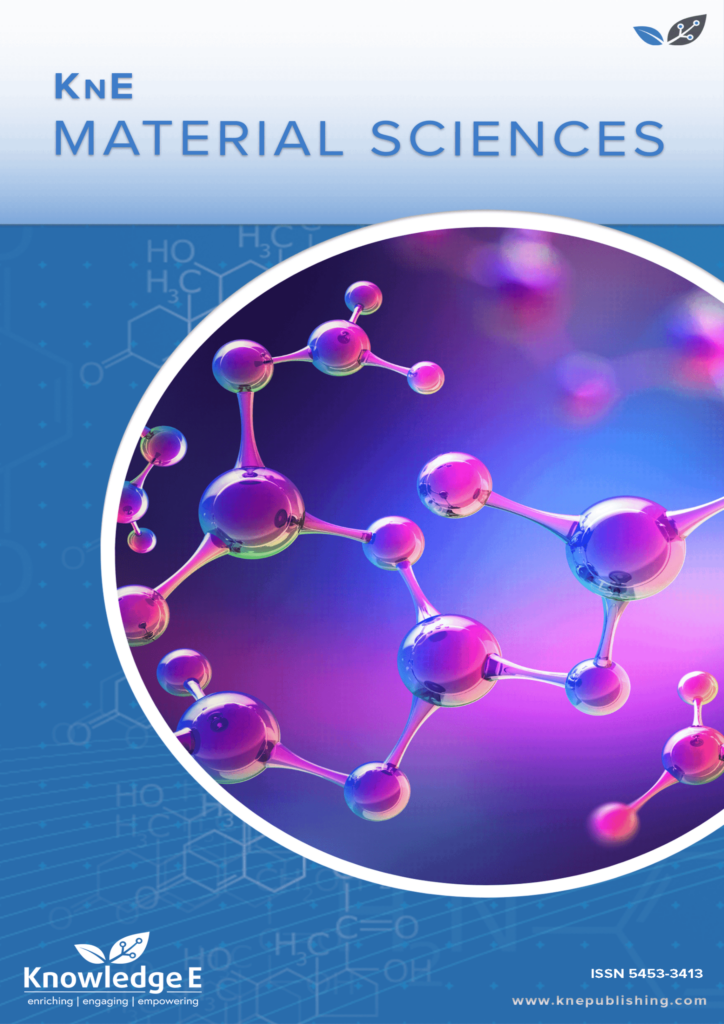
KnE Materials Science
ISSN: 2519-1438
The latest conference proceedings on physical materials, energy materials, electrical materials.
Surgical Removal of Defects in the Palate with the Use of TiNi Mesh
Published date: Jul 17 2017
Journal Title: KnE Materials Science
Issue title: Shape Memory Biomaterials and Implants in Medicine (SMBIM)
Pages: 354-359
Authors:
Abstract:
Application of a thin- profiled mesh NiTi with filaments thickness of 40 micrometer sand with the cell size of 3x3-5x5 mm for patients allows to improve the quality of the surgical technique in conducting surgical procedures for eliminating different forms and sizes of the palate defects. Due to its biochemical, biophysical compatibility with the body tissues and the peculiar integration properties a connective tissue grows around and through the structure of the implant by forming a durable frame. At the same time this process takes place by type of covering the muco-periosteal cover from the wound periphery to the center of the palate, over the implant material and completes with the full elimination of the existing defect. The developed method should be considered as minimally invasive surgical techniques and is recommended as a method of choice for patients with various background diseases.
References:
[1] P.Z. Arzhantsev., S.A. Isakov, Eliminating residual defects of the palate after uranoplasty, Congenital pathology of temporomandibular joint [in Russian]. M., 1989
[2] G.V. Gonchakov, A.G. Prityko, S.G. Gonchakova et al., Analysis of the results of treatment of patients with residual palate defects after uranoplasty, Proceedings of the VII international conference of maxillofacial surgeons and dentists [in Russian]. SPb., 2002, p.41.
[3] A.A. Radkevich and others, Surgical treatment of patients with congenital cleft palate and postoperative palate defects with the use of TiNi implants [in Russian], MIC, Tomsk, 2008.
[4] A.A. Mamedov, New approaches to the treatment of children with congenital cleft lip and palate in modern conditions of healthcare in Russia, Dental South, 9 (2008) 12-16.
[5] V.A. Kozlov, S.S. Mushkovskaya, N.N. Safonov, Defects of hard palate after primary uranoplasty and methods of their elimination, Human, St. Petersburg, 2010.
[6] G.V. Kruchinsky, A new way of eliminating the palate defects, Ibid. 14 (1971) P.22-27.
[7] A.A. Radkevich, V.G. Galonsky, M.Y. Yushkov, Surgery of palate defects with using nickelide titanium tissue, Shape memory materials and new technologies in medicine [in Russian], MIC, Tomsk, 2006.
[8] M.Y.Yushkov, Surgery of palate defects with using shape memory materials, Abstract of dissertation for obtaining the Ph.D.degree in Medical Sciences, Irkutsk, 2008.
[9] K. H. Gundlach, C. Maus, Epidemiology and frequency of clefts in Europe and around the world. Epidemiological Studies on the frequency of clefts in Europe and World – Wide, Maxillofac. Surg. 34 (2006) 1-2.